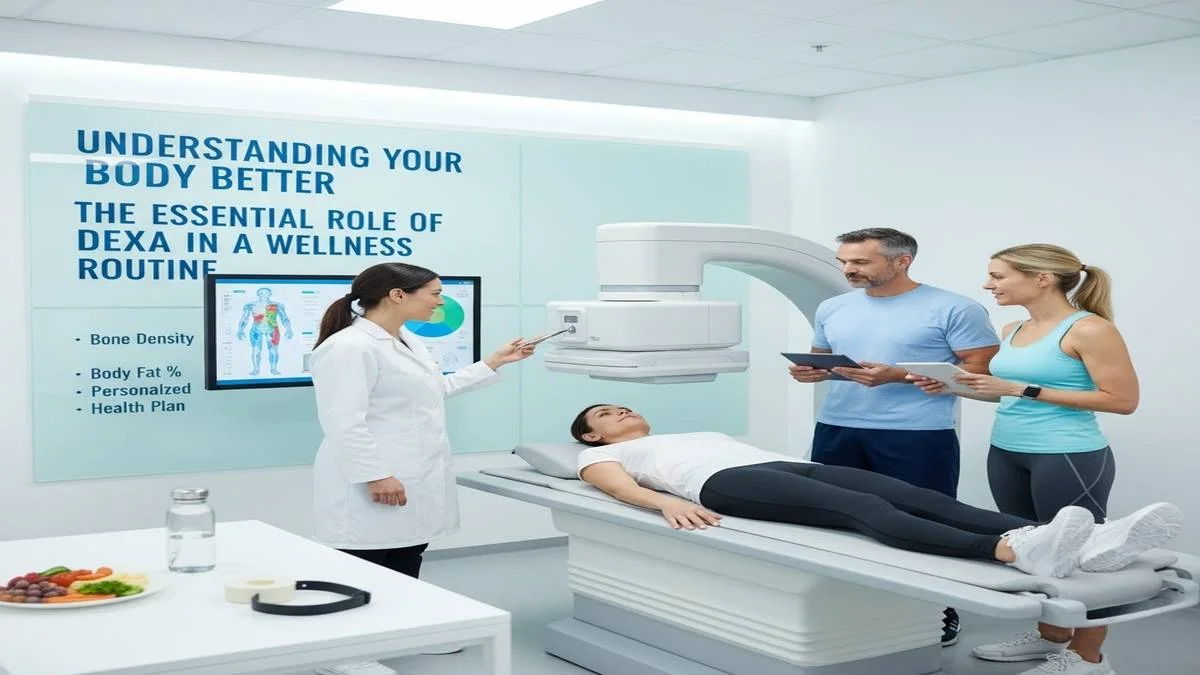HEALTH AND FITNESS
Understanding Your Body Better: The Essential Role of DEXA in a Wellness Routine

Most people approach wellness with movement, mindful eating, and better sleep. But progress can feel uncertain when you rely only on the scale or how your clothes fit. Body composition testing fills that gap. It gives you a clearer picture of what’s happening beneath the surface, how much lean mass you’re building, where your body stores fat, and whether your training, nutrition, and recovery habits are supporting your goals.
Table of Contents
Why Body Composition Matters
Two people can weigh the same yet have completely different proportions of fat, lean mass, and bone. These internal markers influence balance, metabolic health, mobility, and long-term resilience. Understanding them helps you train smarter rather than harder.
That’s where tools like body composition testing come in. They measure the actual makeup of your body so you can make decisions rooted in data instead of guesses.
How DEXA Scans Support Holistic Health
DEXA (Dual-Energy X-ray Absorptiometry) is widely considered the most accurate way to measure fat, muscle, and bone density. A scan shows how your body distributes tissue across each region, arms, legs, trunk, and midsection and whether changes over time reflect strength gain, fat loss, or both.
A single scan provides insight into:
- Where you store fat
- Left/right strength imbalances
- Lean mass trends over time
- Bone density and skeletal health
- Visceral fat (the deeper abdominal fat tied to metabolic risk)
For anyone practicing yoga, strength training, Pilates, or simply working toward better health, this type of information makes it easier to train with intention.
Making Sense of Your Results
DEXA reports are rich with data, tables, graphs, color-coded regions, and historical comparisons. Once you get comfortable with the layout, the information becomes intuitive and incredibly useful.
If you’re unsure how to interpret a scan, this guide on how to read a DEXA scan explains the key sections: total body fat %, regional lean mass, android/gynoid fat distribution, bone density, visceral fat, and how those pieces fit together.
Understanding these components helps you recognize real progress, identify imbalances, and create a more effective training plan.
A Clearer View of Your Body’s Trends
Most DEXA platforms include historical images and charts that show how your body has changed across months or years. These visuals highlight increases or decreases in lean mass, shifts in fat distribution, and changes in total mass. Looking at trends rather than single numbers, is what makes body composition data truly meaningful.
A few common insights people notice over time include:
- Strengthening on one side more than the other
- Fat shifting from the midsection toward lower-body regions (or vice versa)
- Lean mass increasing during strength cycles
- Visceral fat decreases when lifestyle habits improve
- Bone density stabilizing or improving with resistance training
Consistency matters: similar time of day, similar hydration, and the same device help ensure more accurate comparisons between visits.
Bone Density and Why It Matters
Because DEXA uses dual-energy X-ray beams, it can assess bone mineral content along with fat and lean tissue. Bone density scores compare your skeleton to established healthy ranges and help flag whether you may be trending toward osteopenia or osteoporosis. This information is especially valuable for aging populations, people navigating hormonal changes, and individuals with family risk factors.
Visceral Fat: The Silent Indicator
One unique advantage of DEXA is the ability to estimate visceral adipose tissue (VAT)—the deeper abdominal fat surrounding your organs. Higher VAT is associated with cardiometabolic risk, but it often cannot be seen in the mirror. Monitoring this number over time helps you track improvements that may not be visible externally.
FAQ: DEXA Scans, Safety, Benefits & Practical Use
Is a DEXA scan safe?
Yes. The radiation exposure is extremely low, far below a standard X-ray and comparable to what you’d experience on a short commercial flight.
What does a DEXA scan measure?
It provides precise data on fat mass, lean mass, bone density, android/gynoid fat distribution, and visceral fat. Together, these markers create a complete picture of your metabolic and structural health.
Who benefits most from DEXA?
Anyone who wants accurate, individualized insight: beginners, athletes, yoga practitioners, people recovering from injury, or individuals monitoring aging and bone health.
How often should someone retest?
Every 6–12 weeks is common. That window allows your body enough time to adapt so changes are meaningful rather than noise.
What about radiation or risks?
DEXA uses very low-dose X-ray technology. The main caution is for pregnancy, always inform your provider if this might apply to you.
What is VAT and why is it important?
Visceral fat sits deeper in the abdomen and is more connected to metabolic health than subcutaneous fat. Monitoring VAT helps track unseen improvements in internal health.
What does a “good” body fat percentage look like?
It varies widely by age, sex, and goals. The most important indicator is your personal trend over time rather than comparing standard charts.
Putting It All Together
A DEXA scan won’t replace training, nutrition, or mindful habits, but it gives you a foundation of clarity. When you understand your internal baseline, it becomes easier to strengthen what’s working, adjust what isn’t, and build a wellness routine that’s grounded in your unique physiology.
-

 GENERAL5 months ago
GENERAL5 months agoChristofle – For Those Who Dream of Family Heirloom Silver
-

 SPORTS7 months ago
SPORTS7 months agoDiscover the World of Football with Streameast: Watch Your Favorite Leagues and Tournaments
-

 GENERAL3 months ago
GENERAL3 months agoUncovering the World of кинокрадко: The Dark Side of Film Piracy
-

 GENERAL2 months ago
GENERAL2 months agoUnveiling the Art of преводсч: How Translators Bridge Language Barriers























